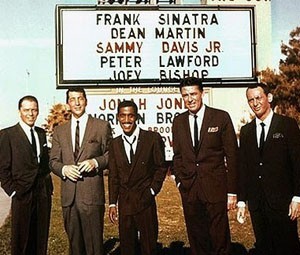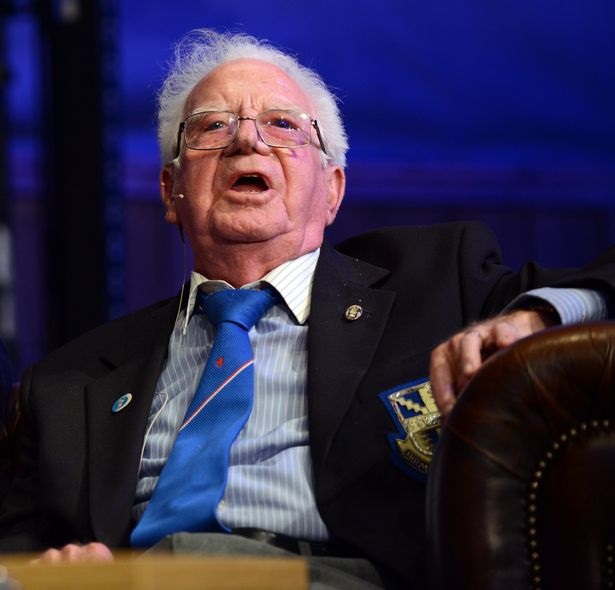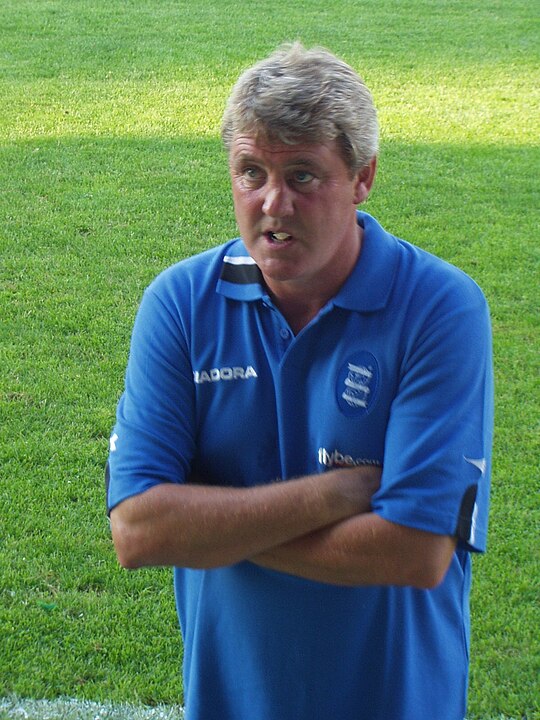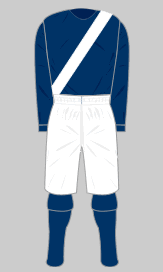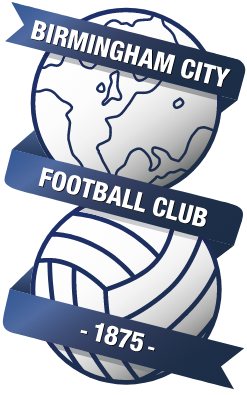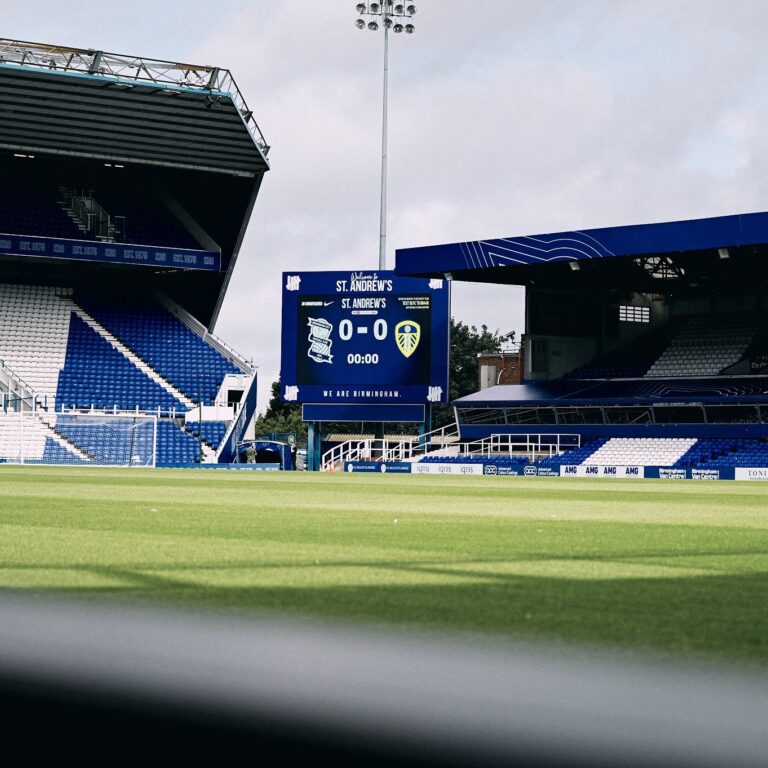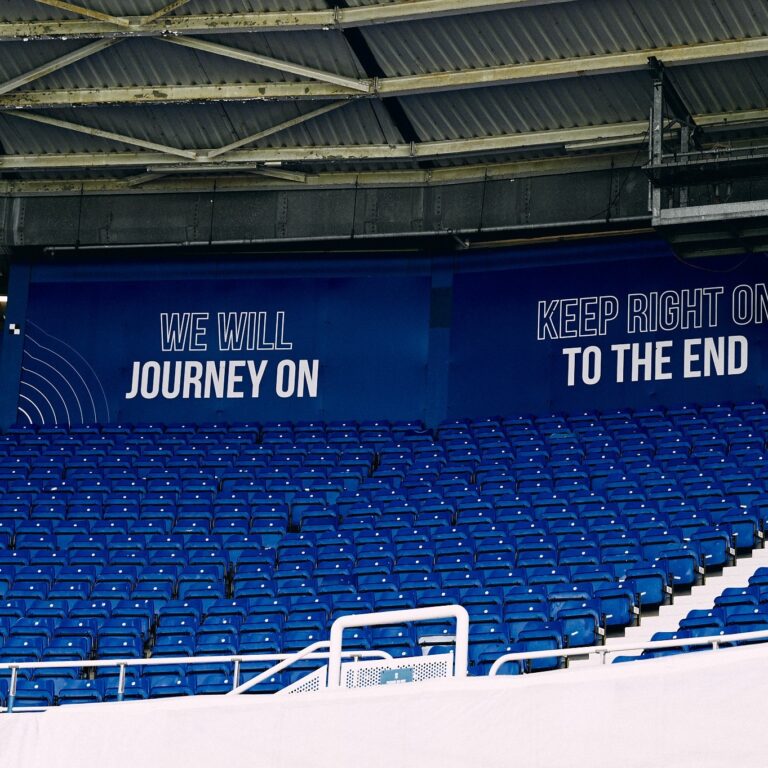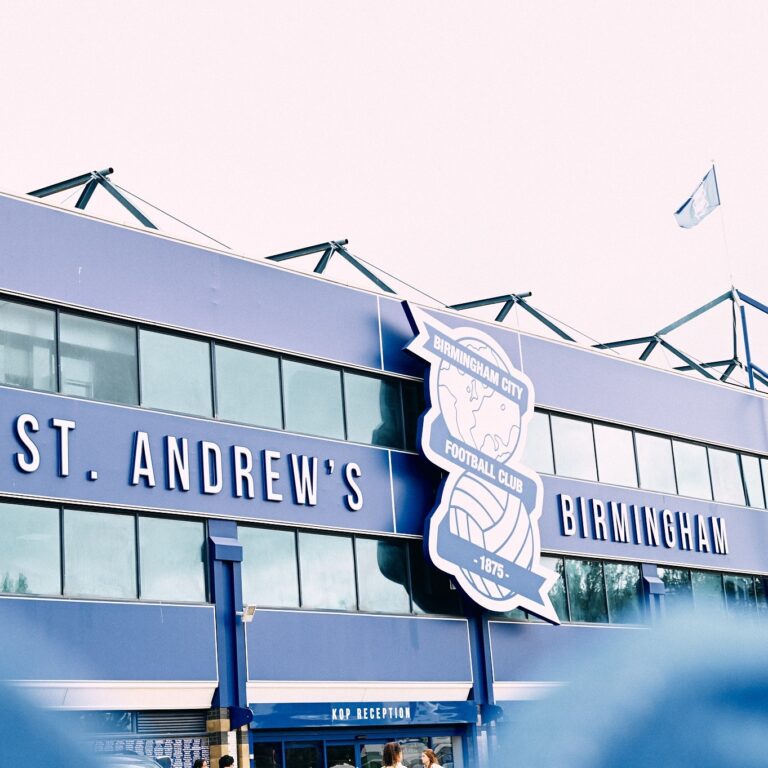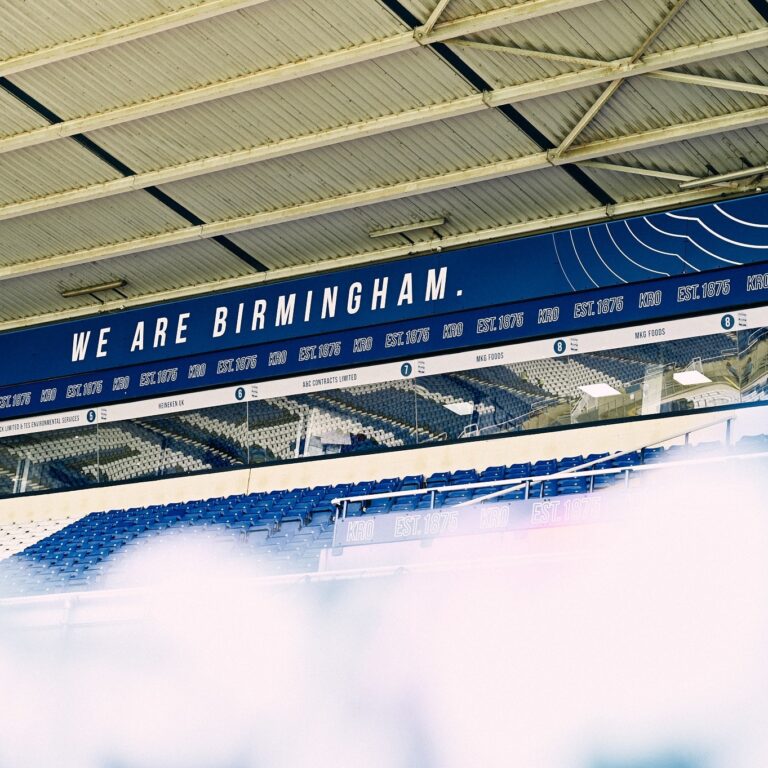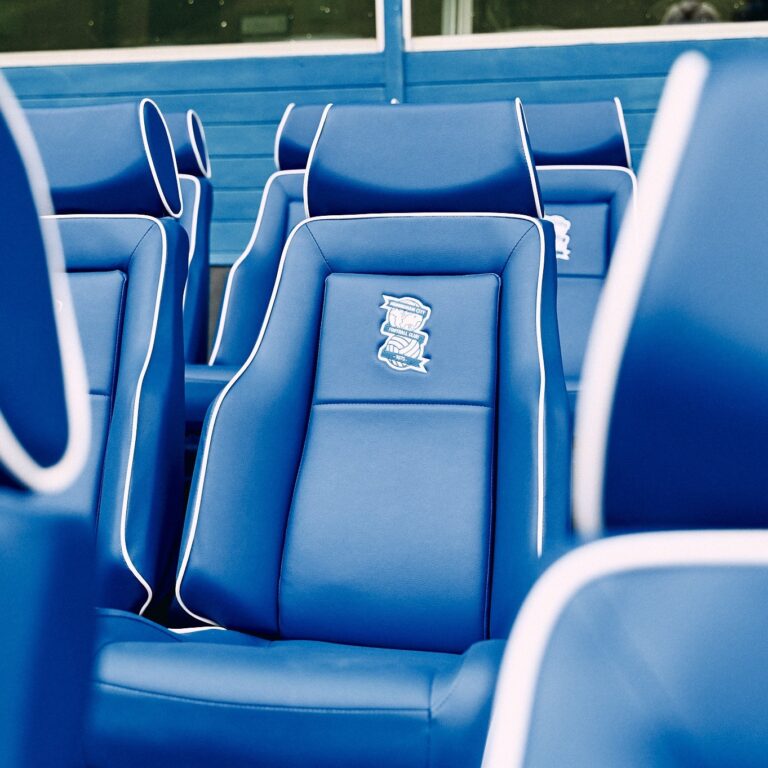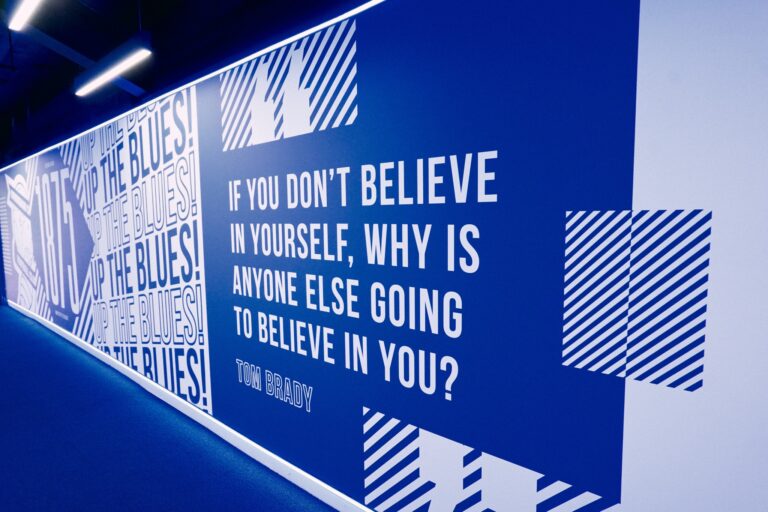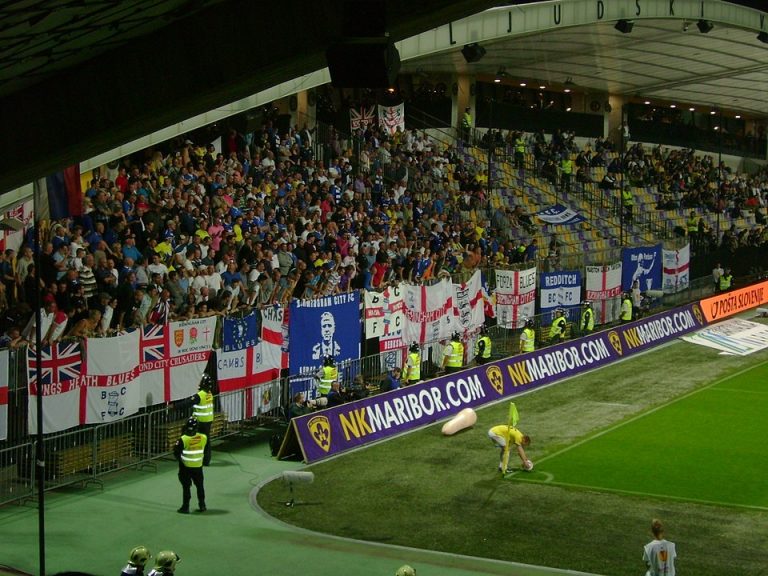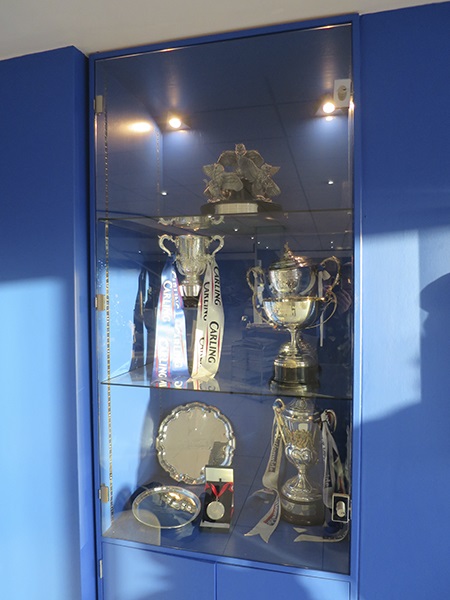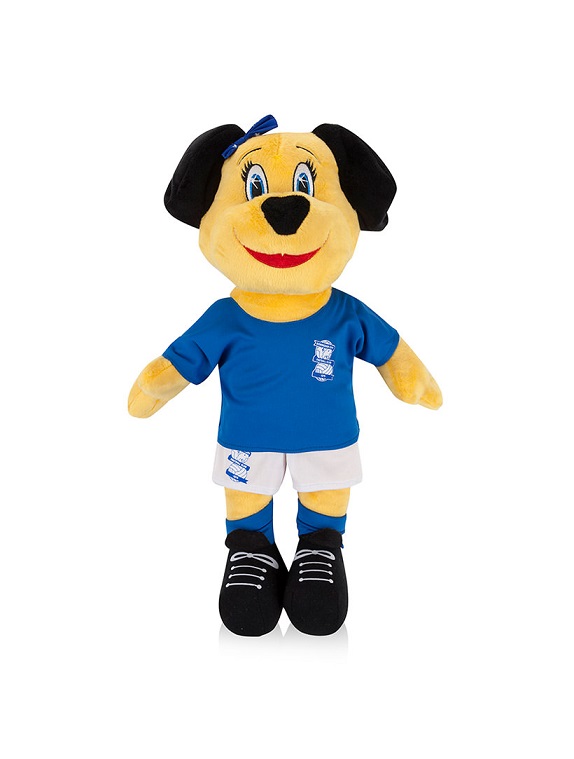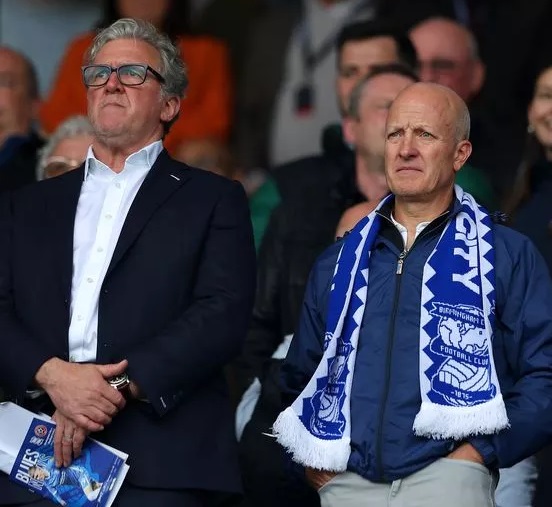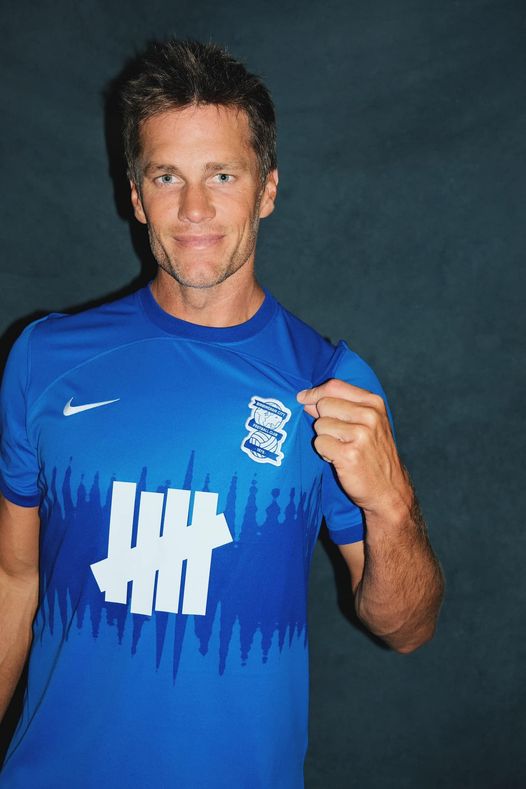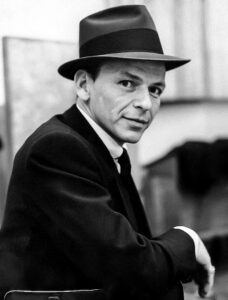
I have grown up listening to the Rat Pack and especially Frank Sinatra. He was so cool and I love his music.
There is an index at the bottom of the page containing some of my favourite songs by him.
About Frank Sinatra
Francis Albert Sinatra was an American singer and actor who is generally viewed as one of the greatest musical artists of the 20th century. He is one of the best-selling music artists of all time, having sold an estimated 150 million records worldwide.
Born to Italian immigrants in Hoboken, New Jersey, Sinatra was greatly influenced by the intimate, easy-listening vocal style of Bing Crosby and began his musical career in the swing era with bandleaders Harry James and Tommy Dorsey. Sinatra found success as a solo artist after he signed with Columbia Records in 1943, becoming the idol of the “bobby soxers”. Sinatra released his debut album, The Voice of Frank Sinatra, in 1946. However, by the early 1950s, his professional career had stalled and he turned to Las Vegas, where he became one of its best-known residency performers as part of the Rat Pack. His career was reborn in 1953 with the success of the film From Here to Eternity, his performance subsequently earning him an Academy Award, and a Golden Globe Award for Best Supporting Actor. Sinatra then released several critically lauded albums, some of which are retrospectively noted as being among the first “concept albums”, including In the Wee Small Hours (1955), Songs for Swingin’ Lovers! (1956), Come Fly with Me (1958), Only the Lonely (1958), No One Cares (1959), and Nice ‘n’ Easy (1960).
Sinatra left Capitol in 1960 to start his own record label, Reprise Records and released a string of successful albums. In 1965, he recorded the retrospective album September of My Years and starred in the Emmy-winning television special Frank Sinatra: A Man and His Music. After releasing Sinatra at the Sands, recorded at the Sands Hotel and Casino in Vegas with frequent collaborator Count Basie in early 1966, the following year he recorded one of his most famous collaborations with Tom Jobim, the album Francis Albert Sinatra & Antonio Carlos Jobim. It was followed by 1968’s Francis A. & Edward K. with Duke Ellington. Sinatra retired for the first time in 1971 but came out of retirement two years later. He recorded several albums and resumed performing at Caesars Palace, and released “New York, New York” in 1980. Using his Las Vegas shows as a home base, he toured both within the United States and internationally until shortly before his death in 1998.
Sinatra forged a highly successful career as a film actor. After winning an Academy Award for From Here to Eternity, he starred in The Man with the Golden Arm (1955), and in The Manchurian Candidate (1962). He appeared in various musicals such as On the Town (1949), Guys and Dolls (1955), High Society (1956), and Pal Joey (1957), winning another Golden Globe for the latter. Toward the end of his career, he frequently played detectives, including the title character in Tony Rome (1967). Sinatra would later receive the Golden Globe Cecil B. DeMille Award in 1971. On television, The Frank Sinatra Show began on ABC in 1950, and he continued to make appearances on television throughout the 1950s and 1960s. Sinatra was also heavily involved with politics from the mid-1940s and actively campaigned for presidents such as Franklin D. Roosevelt, Harry S. Truman, John F. Kennedy and Ronald Reagan. He was investigated by the FBI for his alleged relationship with the Mafia.
While Sinatra never learned how to read music, he worked very hard from a young age to improve his abilities in all aspects of music. A perfectionist, renowned for his dress sense and performing presence, he always insisted on recording live with his band. His bright blue eyes earned him the popular nickname “Ol’ Blue Eyes”. He led a colourful personal life and was often involved in turbulent affairs with women, such as with his second wife Ava Gardner. He later married Mia Farrow in 1966 and Barbara Marx in 1976. Sinatra had several violent confrontations, usually with journalists he felt had crossed him, or work bosses with whom he had disagreements. He was honoured at the Kennedy Center Honors in 1983, was awarded the Presidential Medal of Freedom by Ronald Reagan in 1985, and the Congressional Gold Medal in 1997. Sinatra was also the recipient of eleven Grammy Awards, including the Grammy Trustees Award, Grammy Legend Award and the Grammy Lifetime Achievement Award. He was included in Time magazine’s compilation of the 20th century’s 100 most influential people. After Sinatra’s death, American music critic Robert Christgau called him “the greatest singer of the 20th century”, and he continues to be seen as an iconic figure.
Frank Sinatra’s Early Life
Francis Albert Sinatra was born on December 12, 1915, in an upstairs tenement at 415 Monroe Street in Hoboken, New Jersey, the only child of Italian immigrants Natalina “Dolly” Garaventa and Antonino Martino “Marty” Sinatra. Sinatra weighed 13.5 pounds (6.1 kg) at birth and had to be delivered with the aid of forceps, which caused severe scarring to his left cheek, neck, and ear, and perforated his eardrum—damage that remained for life. Due to his injuries at birth, his baptism at St. Francis Church in Hoboken was delayed until April 2, 1916. A childhood operation on his mastoid bone left major scarring on his neck, and during adolescence, he suffered from cystic acne that further scarred his face and neck. Sinatra was raised in the Roman Catholic church.
Sinatra’s mother was energetic and driven, and biographers believe that she was the dominant factor in the development of her son’s personality traits and self-confidence. Sinatra’s fourth wife Barbara would later claim that Dolly was abusive to him when he was a child, and “knocked him around a lot”. Dolly became influential in Hoboken and in local Democratic Party circles. She worked as a midwife, earning $50 for each delivery, and according to Sinatra biographer Kitty Kelley, also ran an illegal abortion service that catered to Italian Catholic girls, for which she was nicknamed “Hatpin Dolly”. She also had a gift for languages and served as a local interpreter.
Sinatra’s illiterate father was a bantamweight boxer who fought under the name Marty O’Brien. He later worked for 24 years at the Hoboken Fire Department, working his way up to captain. Sinatra spent much time at his parents’ tavern in Hoboken, working on his homework and occasionally singing a song on top of the player piano for spare change. During the Great Depression, Dolly provided money to her son for outings with friends and to buy expensive clothes, resulting in neighbours describing him as the “best-dressed kid in the neighbourhood”. Excessively thin and small as a child and young man, Sinatra’s skinny frame later became a staple of jokes during stage shows.
Sinatra developed an interest in music, particularly big band jazz, at a young age. He listened to Gene Austin, Rudy Vallée, Russ Colombo, and Bob Eberly, and idolized Bing Crosby. Sinatra’s maternal uncle, Domenico, gave him a ukulele for his 15th birthday, and he began performing at family gatherings. Sinatra attended David E. Rue Jr. High School from 1928, and A. J. Demarest High School (since renamed Hoboken High School) in 1931, where he arranged bands for school dances. He left without graduating, having attended only 47 days before being expelled for “general rowdiness”. To please his mother, he enrolled at Drake Business School but departed after 11 months. Dolly found Sinatra work as a delivery boy at the Jersey Observer newspaper, where his godfather Frank Garrick worked, and after that, Sinatra was a riveter at the Tietjen and Lang shipyard. He performed in local Hoboken social clubs such as The Cat’s Meow and The Comedy Club and sang for free on radio stations such as WAAT in Jersey City. In New York, Sinatra found jobs singing for his supper or for cigarettes. To improve his speech, he began taking elocution lessons for a dollar each from vocal coach John Quinlan, who was one of the first people to notice his impressive vocal range.
Frank Sinatra’s Music Career
Hoboken Four, Harry James, And Tommy Dorsey (1935 – 1939)
Sinatra began singing professionally as a teenager, but he learned music by ear and never learned to read music. He got his first break in 1935 when his mother persuaded a local singing group, the 3 Flashes, to let him join. Fred Tamburro, the group’s baritone, stated that “Frank hung around us like we were gods or something”, admitting that they only took him on board because he owned a car and could chauffeur the group around. Sinatra soon learned they were auditioning for the Major Bowes Amateur Hour show, and “begged” the group to let him in on the act. With Sinatra, the group became known as the Hoboken Four, and passed an audition from Edward Bowes to appear on the Major Bowes Amateur Hour show. They each earned $12.50 for the appearance, and ended up attracting 40,000 votes and won first prize—a six-month contract to perform on stage and radio across the United States. Sinatra quickly became the group’s lead singer, and, much to the jealousy of his fellow group members, garnered most of the attention from girls. Due to the success of the group, Bowes kept asking for them to return, disguised under different names, varying from “The Secaucus Cockamamies” to “The Bayonne Bacalas”.
In 1938, Sinatra found employment as a singing waiter at a roadhouse called “The Rustic Cabin” in Englewood Cliffs, New Jersey, for which he was paid $15 a week. The roadhouse was connected to the WNEW radio station in New York City, and he began performing with a group live during the Dance Parade show. Despite the low salary, Sinatra felt that this was the break he was looking for, and boasted to friends that he was going to “become so big that no one could ever touch him”. In March 1939, saxophone player Frank Mane, who knew Sinatra from Jersey City radio station WAAT where both performed on live broadcasts, arranged for him to audition and record “Our Love”, his first solo studio recording. In June, bandleader Harry James, who had heard Sinatra sing on “Dance Parade”, signed a two-year contract of $75 a week one evening after a show at the Paramount Theatre in New York. It was with the James band that Sinatra released his first commercial record “From the Bottom of My Heart” in July. No more than 8,000 copies of the record were sold, and further records released with James through 1939, such as “All or Nothing at All”, also had weak sales on their initial release. Thanks to his vocal training, Sinatra could now sing two tones higher, and developed a repertoire that included songs such as “My Buddy”, “Willow Weep for Me”, “It’s Funny to Everyone but Me”, “Here Comes the Night”, “On a Little Street in Singapore”, “Ciribiribin”, and “Every Day of My Life”.
Sinatra became increasingly frustrated with the status of the Harry James band, feeling that he was not achieving the major success and acclaim he was looking for. His pianist and close friend Hank Sanicola persuaded him to stay with the group, but in November 1939 he left James to replace Jack Leonard as the lead singer of the Tommy Dorsey band. Sinatra earned $125 a week, appearing at the Palmer House in Chicago, and James released Sinatra from his contract. On January 26, 1940, he made his first public appearance with the band at the Coronado Theatre in Rockford, Illinois, opening the show with “Stardust”. Dorsey recalled: “You could almost feel the excitement coming up out of the crowds when the kid stood up to sing. Remember, he was no matinée idol. He was just a skinny kid with big ears. I used to stand there so amazed I’d almost forget to take my own solos”. Dorsey was a major influence on Sinatra and became a father figure. Sinatra copied Dorsey’s mannerisms and traits, becoming a demanding perfectionist like him, even adopting his hobby of toy trains. He asked Dorsey to be godfather to his daughter Nancy in June 1940. Sinatra later said that “The only two people I’ve ever been afraid of are my mother and Tommy Dorsey”. Though Kelley says that Sinatra and drummer Buddy Rich were bitter rivals, other authors state that they were friends and even roommates when the band was on the road, but professional jealousy surfaced as both men wanted to be considered the star of Dorsey’s band. Later, Sinatra helped Rich form his own band with a $25,000 loan and provided financial help to Rich during times of the drummer’s serious illness.
Read more about Hoboken Four, Harry James, And Tommy Dorsey (1935 – 1939) here.
Onset Of Sinatramania And Role In World War II (1942 – 1945)
“Perfectly simple: It was the war years and there was a great loneliness, and I was the boy in every corner drugstore, the boy who’d gone off drafted to the war. That’s all.” – Frank Sinatra on his popularity with young women.
Sinatra signed with Columbia Records as a solo artist on June 1, 1943, during the 1942–44 musicians’ strike. Columbia Records re-released Harry James and Sinatra’s August 1939 version of “All or Nothing at All”, which reached number 2 on June 2 and was on the best-selling list for 18 weeks. He initially had great success and performed on the radio on Your Hit Parade from February 1943 until December 1944, and on stage. Columbia wanted new recordings of their growing star as quickly as possible, so Alec Wilder was hired as an arranger and conductor for several sessions with a vocal group called the Bobby Tucker Singers. These first sessions were on June 7, June 22, August 5, and November 10, 1943. Of the nine songs recorded during these sessions, seven charted on the best-selling list. That year he also made his first solo nightclub appearance at New York’s Riobamba, and a successful concert in the Wedgewood Room of the prestigious Waldorf-Astoria New York that year secured his popularity in New York high society. Sinatra released “You’ll Never Know”, “Close to You”, “Sunday, Monday, or Always” and “People Will Say We’re In Love” as singles. By the end of 1943, he was more popular in a DownBeat poll than Bing Crosby, Perry Como, Bob Eberly, and Dick Haymes.
Sinatra did not serve in the military during World War II. On December 11, 1943, he was officially classified 4-F (“Registrant not acceptable for military service”) by his draft board because of a perforated eardrum. However, U.S. Army files reported that Sinatra was “not acceptable material from a psychiatric viewpoint”, but his emotional instability was hidden to avoid “undue unpleasantness for both the selectee and the induction service”. Briefly, there were rumours reported by columnist Walter Winchell that Sinatra paid $40,000 to avoid the service, but the FBI found this to be without merit.
Toward the end of the war, Sinatra entertained the troops during several successful overseas USO tours with comedian Phil Silvers. During one trip to Rome, he met the Pope, who asked him if he was an operatic tenor. Sinatra worked frequently with the popular Andrews Sisters in radio in the 1940s, and many USO shows were broadcast to troops via the Armed Forces Radio Service (AFRS). In 1944 Sinatra released “I Couldn’t Sleep a Wink Last Night” as a single and recorded his own version of Crosby’s “White Christmas”, and the following year he released “I Dream of You (More Than You Dream I Do)”, “Saturday Night (Is the Loneliest Night of the Week)”, “Dream”, and “Nancy (With the Laughing Face)” as singles.
Columbia Years And Career Slump (1946 – 1952)
Despite being heavily involved in political activity in 1945 and 1946, in those two years, Sinatra sang on 160 radio shows, recorded 36 times, and shot four films. By 1946 he was performing on stage up to 45 times a week, singing up to 100 songs daily, and earning up to $93,000 a week.
In 1946 Sinatra released “Oh! What it Seemed to Be”, “Day by Day”, “They Say It’s Wonderful”, “Five Minutes More”, and “The Coffee Song” as singles, and launched his first album, The Voice of Frank Sinatra, which reached No. 1 on the Billboard chart. William Ruhlmann of AllMusic wrote that Sinatra “took the material very seriously, singing the love lyrics with utter seriousness”, and that his “singing and the classically influenced settings gave the songs unusual depth of meaning”. He was soon selling 10 million records a year. Such was Sinatra’s command at Columbia that his love of conducting was indulged with the release of the set Frank Sinatra Conducts the Music of Alec Wilder, an offering unlikely to appeal to Sinatra’s core fanbase at the time, which consisted of teenage girls. The following year he released his second album, Songs by Sinatra, featuring songs of a similar mood and tempo such as Irving Berlin’s “How Deep is the Ocean?” and Harold Arlen’s and Jerome Kern’s “All The Things You Are”. “Mam’selle”, composed by Edmund Goulding with lyrics by Mack Gordon for the film The Razor’s Edge (1946), was released as a single. Sinatra had competition; versions by Art Lund, Dick Haymes, Dennis Day, and The Pied Pipers also reached the top ten of the Billboard charts. In December he recorded “Sweet Lorraine” with the Metronome All-Stars, featuring talented jazz musicians such as Coleman Hawkins, Harry Carney and Charlie Shavers, with Nat King Cole on piano, in what Charles L. Granata describes as “one of the highlights of Sinatra’s Columbia epoch”.
Sinatra’s third album, Christmas Songs by Sinatra, was originally released in 1948 as a 78 rpm album set, and a 10″ LP record was released two years later. When Sinatra was featured as a priest in The Miracle of the Bells, due to press negativity surrounding his alleged Mafia connections at the time, it was announced to the public that Sinatra would donate his $100,000 in wages from the film to the Catholic Church. By the end of 1948, Sinatra had slipped to fourth on DownBeat‘s annual poll of most popular singers (behind Billy Eckstine, Frankie Laine, and Bing Crosby). In the following year he was pushed out of the top spots in polls for the first time since 1943. Frankly Sentimental (1949) was panned by DownBeat, who commented that “for all his talent, it seldom comes to life”.
Though “The Hucklebuck” reached the top ten, it was his last single release under the Columbia label. Sinatra’s last two albums with Columbia, Dedicated to You and Sing and Dance with Frank Sinatra, were released in 1950. Sinatra would later feature a number of the Sing and Dance with Frank Sinatra album’s songs, including “Lover”, “It’s Only a Paper Moon”, “It All Depends on You”, on his 1961 Capitol release, Sinatra’s Swingin’ Session!!!
Read more about Columbia Years And Career Slump (1946 – 1952) here.
Career Revival And The Capitol Years (1953 – 1962)
The release of the film From Here to Eternity in August 1953 marked the beginning of a remarkable career revival. Tom Santopietro notes that Sinatra began to bury himself in his work, with an “unparalleled frenetic schedule of recordings, movies and concerts”, in what authors Anthony Summers and Robbyn Swan describe as “a new and brilliant phase”. On March 13, 1953, Sinatra met with Capitol Records vice president Alan Livingston and signed a seven-year recording contract. His first session for Capitol took place at KHJ studios at Studio C, 5515 Melrose Avenue in Los Angeles, with Axel Stordahl conducting. The session produced four recordings, including “I’m Walking Behind You”, Sinatra’s first Capitol single. After spending two weeks on location in Hawaii filming From Here to Eternity, Sinatra returned to KHJ on April 30 for his first recording session with Nelson Riddle, an established arranger and conductor at Capitol who was Nat King Cole’s musical director. After recording the first song, “I’ve Got the World on a String”, Sinatra offered Riddle a rare expression of praise, “Beautiful!”, and after listening to the playbacks, he could not hide his enthusiasm, exclaiming, “I’m back, baby, I’m back!”
In subsequent sessions in May and November 1953, Sinatra and Riddle developed and refined their musical collaboration, with Sinatra providing specific guidance on the arrangements. Sinatra’s first album for Capitol, Songs for Young Lovers, was released on January 4, 1954, and included “A Foggy Day”, “I Get a Kick Out of You”, “My Funny Valentine”, “Violets for Your Furs” and “They Can’t Take That Away from Me”, songs which became staples of his later concerts. That same month, Sinatra released the single “Young at Heart”, which reached No. 2 and was awarded Song of the Year. In March, he recorded and released the single “Three Coins in the Fountain”, a “powerful ballad” that reached No. 4. Sinatra’s second album with Riddle, Swing Easy!, which reflected his “love for the jazz idiom” according to Granata, was released on August 2 of that year and included “Just One of Those Things”, “Taking a Chance on Love”, “Get Happy”, and “All of Me”. Swing Easy! was named Album of the Year by Billboard, and he was also named “Favorite Male Vocalist” by Billboard, DownBeat, and Metronome that year. Sinatra came to consider Riddle “the greatest arranger in the world”, and Riddle, who considered Sinatra “a perfectionist”, offered equal praise of the singer, observing, “It’s not only that his intuitions as to tempi, phrasing, and even configuration are amazingly right, but his taste is so impeccable… there is still no one who can approach him.”
In 1955 Sinatra released In the Wee Small Hours, his first 12″ LP, featuring songs such as “In the Wee Small Hours of the Morning”, “Mood Indigo”, “Glad to Be Unhappy” and “When Your Lover Has Gone”. According to Granata it was the first concept album of his to make a “single persuasive statement”, with an extended program and “melancholy mood”. Sinatra embarked on his first tour of Australia the same year. Another collaboration with Riddle resulted in the development of Songs for Swingin’ Lovers!, sometimes seen as one of his best albums, which was released in March 1956. It features a recording of “I’ve Got You Under My Skin” by Cole Porter, something which Sinatra paid meticulous care to, taking a reported 22 takes to perfect.
His February 1956 recording sessions inaugurated the studios at the Capitol Records Building, complete with a 56-piece symphonic orchestra. According to Granata his recordings of “Night and Day”, “Oh! Look at Me Now” and “From This Moment On” revealed “powerful sexual overtones, stunningly achieved through the mounting tension and release of Sinatra’s best-teasing vocal lines”, while his recording of “River, Stay ‘Way from My Door” in April demonstrated his “brilliance as a syncopational improviser”. Riddle said that Sinatra took “particular delight” in singing “The Lady is a Tramp”, commenting that he “always sang that song with a certain amount of salaciousness”, making “cue tricks” with the lyrics. His penchant for conducting was displayed again in 1956’s Frank Sinatra Conducts Tone Poems of Color, an instrumental album that has been interpreted to be a catharsis to his failed relationship with Gardner. Also that year, Sinatra sang at the Democratic National Convention and performed with The Dorsey Brothers for a week soon afterwards at the Paramount Theatre.
Read more about Career Revival And The Capitol Years (1953 – 1962) here.
Reprise Years (1961 – 1981)
Sinatra grew discontented at Capitol and fell into a feud with Alan Livingston, which lasted over six months. His first attempt at owning his own label was with his pursuit of buying declining jazz label, Verve Records, which ended once an initial agreement with Verve founder, Norman Granz, “failed to materialize.” He decided to form his own label, Reprise Records and, in an effort to assert his new direction, temporarily parted with Riddle, May and Jenkins, working with other arrangers such as Neil Hefti, Don Costa, and Quincy Jones. Sinatra built the appeal of Reprise Records as one in which artists were promised creative control over their music, as well as a guarantee that they would eventually gain “complete ownership of their work, including publishing rights.” Under Sinatra, the company developed into a music industry “powerhouse”, and he later sold it for an estimated $80 million. His first album on the label, Ring-a-Ding-Ding! (1961), was a major success, peaking at No.4 on Billboard. The album was released in February 1961, the same month that Reprise Records released Ben Webster’s The Warm Moods, Sammy Davis Jr.’s The Wham of Sam, Mavis River’s Mavis and Joe E. Lewis’s It is Now Post Time. During the initial years of Reprise, Sinatra was still under contract to record for Capitol, completing his contractual commitment with the release of Point of No Return, recorded over a two-day period on September 11 and 12, 1961.
In 1962, Sinatra released Sinatra and Strings, a set of standard ballads arranged by Don Costa, which became one of the most critically acclaimed works of Sinatra’s entire Reprise period. Frank Jr., who was present during the recording, noted the “huge orchestra”, which Nancy Sinatra stated “opened a whole new era” in pop music, with orchestras getting bigger, embracing a “lush string sound”. Sinatra and Count Basie collaborated for the album Sinatra-Basie the same year, a popular and successful release that prompted them to rejoin two years later for the follow-up It Might as Well Be Swing, arranged by Quincy Jones. The two became frequent performers together, and appeared at the Newport Jazz Festival in 1965. Also in 1962, as the owner of his own record label, Sinatra was able to step on the podium as conductor again, releasing his third instrumental album Frank Sinatra Conducts Music from Pictures and Plays.
In 1963, Sinatra reunited with Nelson Riddle for The Concert Sinatra, an ambitious album featuring a 73-piece symphony orchestra arranged and conducted by Riddle. The concert was recorded on a motion picture scoring soundstage with the use of multiple synchronized recording machines that employed an optical signal onto 35 mm film designed for movie soundtracks. Granata considers the album to have been “impeachable”, “one of the very best of the Sinatra-Riddle ballad albums”, in which Sinatra displayed an impressive vocal range, particularly in “Ol’ Man River”, in which he darkened the hue.
In 1964 the song “My Kind of Town” was nominated for the Academy Award for Best Original Song. Sinatra released Softly, as I Leave You, and collaborated with Bing Crosby and Fred Waring on America, I Hear You Singing, a collection of patriotic songs recorded as a tribute to the assassinated President John F. Kennedy. Sinatra increasingly became involved in charitable pursuits in this period. In 1961 and 1962 he went to Mexico, with the sole purpose of putting on performances for Mexican charities, and in July 1964 he was present for the dedication of the Frank Sinatra International Youth Center for Arab and Jewish children in Nazareth.
Sinatra’s phenomenal success in 1965, coinciding with his 50th birthday, prompted Billboard to proclaim that he may have reached the “peak of his eminence”. In June 1965, Sinatra, Sammy Davis Jr., and Dean Martin played live in St. Louis to benefit Dismas House, a prisoner rehabilitation and training centre with nationwide programs that in particular helped serve African Americans. The Rat Pack concert, called The Frank Sinatra Spectacular, was broadcast live via satellite to numerous movie theatres across America. The album September of My Years was released in September 1965 and went on to win the Grammy Award for best album of the year. Granata considers the album to have been one of the finest of his Reprise years, “a reflective throwback to the concept records of the 1950s, and more than any of those collections distils everything that Frank Sinatra had ever learned or experienced as a vocalist”. One of the album’s singles, “It Was a Very Good Year”, won the Grammy Award for Best Vocal Performance, Male. A career anthology, A Man and His Music followed in November, winning Album of the Year at the Grammys the following year.
In 1966 Sinatra released That’s Life, with both the single of “That’s Life” and the album becoming Top Ten hits in the US on Billboard‘s pop charts. Strangers in the Night went on to top the Billboard and UK pop singles charts, winning the award for Record of the Year at the Grammys. Sinatra’s first live album, Sinatra at the Sands, was recorded during January and February 1966 at the Sands Hotel and Casino in Las Vegas. Sinatra was backed by the Count Basie Orchestra, with Quincy Jones conducting. Sinatra pulled out from the Sands the following year when he was driven out by its new owner Howard Hughes, after a fight.
Sinatra started 1967 with a series of recording sessions with Antônio Carlos Jobim. He recorded one of his collaborations with Jobim, the Grammy-nominated album Francis Albert Sinatra & Antônio Carlos Jobim, which was one of the best-selling albums of the year, behind the Beatles’ Sgt. Pepper’s Lonely Hearts Club Band. According to Santopietro the album “consists of an extraordinarily effective blend of bossa nova and slightly swinging jazz vocals, and succeeds in creating an unbroken mood of romance and regret”. Writer Stan Cornyn wrote that Sinatra sang so softly on the album that it was comparable to the time that he suffered from a vocal haemorrhage in 1950.
Sinatra also released the album The World We Knew, which features a chart-topping duet of “Somethin’ Stupid” with daughter Nancy. In December, Sinatra collaborated with Duke Ellington on the album Francis A. & Edward K.. According to Granata, the recording of “Indian Summer” on the album was a favourite of Riddle’s, noting the “contemplative mood [which] is heightened by a Johnny Hodges alto sax solo that will bring a tear to your eye”. With Sinatra in mind, singer-songwriter Paul Anka wrote the song “My Way”, using the melody of the French “Comme d’habitude” (“As Usual”), composed by Claude François and Jacques Revaux. Sinatra recorded it in one take, just after Christmas 1968. “My Way”, Sinatra’s best-known song on the Reprise label, was not an instant success, charting at No. 27 in the US and No. 5 in the UK, but it remained in the UK charts for 122 weeks, including 75 non-consecutive weeks in the Top 40, between April 1969 and September 1971, which was still a record in 2015. Sinatra told songwriter Ervin Drake in the 1970s that he “detested” singing the song, because he believed audiences would think it was a “self-aggrandizing tribute”, professing that he “hated boastfulness in others”.
In an effort to maintain his commercial viability in the late 1960s, Sinatra would record works by Paul Simon (“Mrs. Robinson”), the Beatles (“Yesterday”), and Joni Mitchell (“Both Sides, Now”) in 1969.
Retirement And Return (1970 – 1981)
In 1970, Sinatra released Watertown, a critically acclaimed concept album, with music by Bob Gaudio (of the Four Seasons) and lyrics by Jake Holmes. However, it sold a mere 30,000 copies that year and reached a peak chart position of 101. He left Caesars Palace in September that year after an incident where executive Sanford Waterman pulled a gun on him. He performed several charity concerts with Count Basie at the Royal Festival Hall in London. On November 2, 1970, Sinatra recorded the last songs for Reprise Records before his self-imposed retirement, announced the following June at a concert in Hollywood to raise money for the Motion Picture and TV Relief Fund. He gave a “rousing” performance of “That’s Life”, and finished the concert with a Matt Dennis and Earl Brent song, “Angel Eyes” which he had recorded on the Only The Lonely album in 1958. He sang the last line.”‘Scuse me while I disappear.” The spotlight went dark and he left the stage. He told LIFE journalist Thomas Thompson that “I’ve got things to do like the first thing is not to do anything at all for eight months… maybe a year”, while Barbara Sinatra later said that Sinatra had grown “tired of entertaining people, especially when all they really wanted were the same old tunes he had long ago become bored by”. While he was in retirement, President Richard Nixon asked him to perform at a Young Voters Rally in anticipation of the upcoming campaign. Sinatra obliged and chose to sing “My Kind of Town” for the rally held in Chicago on October 20, 1972.
In 1973, Sinatra came out of his short-lived retirement with a television special and album. The album, entitled Ol’ Blue Eyes Is Back, arranged by Gordon Jenkins and Don Costa, was a success, reaching number 13 on Billboard and number 12 in the UK. The television special, Magnavox Presents Frank Sinatra, reunited Sinatra with Gene Kelly. He initially developed problems with his vocal cords during the comeback due to a prolonged period without singing. That Christmas he performed at the Sahara Hotel in Las Vegas, and returned to Caesars Palace the following month in January 1974, despite previously vowing to perform there again. He began what Barbara Sinatra describes as a “massive comeback tour of the United States, Europe, the Far East and Australia”. In July, while on the second tour of Australia, he caused an uproar by describing journalists there – who were aggressively pursuing his every move and pushing for a press conference – as “bums, parasites, fags, and buck-and-a-half hookers”. After he was pressured to apologize, Sinatra instead insisted that the journalists apologize for “fifteen years of abuse I have taken from the world press”. Union actions cancelled concerts and grounded Sinatra’s plane, essentially trapping him in Australia. In the end, Sinatra’s lawyer, Mickey Rudin, arranged for Sinatra to issue a written conciliatory note and a final concert that was televised to the nation. In October 1974 he appeared at New York City’s Madison Square Garden in a televised concert that was later released as an album under the title The Main Event – Live. Backing him was bandleader Woody Herman and the Young Thundering Herd, who accompanied Sinatra on a European tour later that month.
In 1975, Sinatra performed in concerts in New York with Count Basie and Ella Fitzgerald, and at the London Palladium with Basie and Sarah Vaughan, and in Tehran at Aryamehr Stadium, giving 140 performances in 105 days. In August he held several consecutive concerts at Lake Tahoe together with the newly-risen singer John Denver, who became a frequent collaborator. Sinatra had recorded Denver’s “Leaving on a Jet Plane” and “My Sweet Lady” for Sinatra & Company (1971), and according to Denver, his song “A Baby Just Like You” was written at Sinatra’s request for his new grandchild, Angela. During the Labor Day weekend held in 1976, Sinatra was responsible for reuniting old friends and comedy partners Dean Martin and Jerry Lewis for the first time in nearly twenty years, when they performed at the “Jerry Lewis MDA Telethon”. That year, the Friars Club selected him as the “Top Box Office Name of the Century”, and he was given the Scopus Award by the American Friends of the Hebrew University of Jerusalem in Israel and an honorary Doctor of Humane Letters from the University of Nevada.
Sinatra continued to perform at Caesars Palace in the late 1970’s and was performing there in January 1977 when his mother Dolly died in a plane crash on the way to see him. He cancelled two weeks of shows and spent time recovering from the shock in Barbados. In March, he performed in front of Princess Margaret at the Royal Albert Hall in London, raising money for the National Society for the Prevention of Cruelty to Children. On March 14, he recorded with Nelson Riddle for the last time, recording the songs “Linda”, “Sweet Loraine”, and “Barbara”. The two men had a major falling out, and later patched up their differences in January 1985 at a dinner organized for Ronald Reagan, when Sinatra asked Riddle to make another album with him. Riddle was ill at the time and died that October before they had a chance to record.
In 1978, Sinatra filed a $1 million lawsuit against a land developer for using his name in the “Frank Sinatra Drive Center” in West Los Angeles. During a party at Caesars in 1979, he was awarded the Grammy Trustees Award, while celebrating 40 years in show business and his 64th birthday. That year, former President Gerald Ford awarded Sinatra the International Man of the Year Award, and he performed in front of the Egyptian pyramids for Anwar Sadat, which raised more than $500,000 for Sadat’s wife’s charities.
In 1980, Sinatra’s first album in six years was released, Trilogy: Past Present Future, a highly ambitious triple album that features an array of songs from both the pre-rock era and rock era. It was the first studio album of Sinatra’s to feature his touring pianist at the time, Vinnie Falcone and was based on an idea by Sonny Burke. The album garnered six Grammy nominations – winning for best liner notes – and peaked at number 17 on Billboard’s album chart, and spawned yet another song that would become a signature tune, “Theme from New York, New York”. That year, as part of the Concert of the Americas, he performed in the Maracanã Stadium in Rio de Janeiro, Brazil, which broke records for the “largest live paid audience ever recorded for a solo performer”. The following year, Sinatra built on the success of Trilogy with She Shot Me Down, an album that was praised for embodying the dark tone of his Capitol years. Also in 1981, Sinatra was embroiled in controversy when he worked a ten-day engagement for $2 million in Sun City, in the internationally unrecognized Bophuthatswana, breaking a cultural boycott against apartheid-era South Africa. President Lucas Mangope awarded Sinatra with the highest honour, the Order of the Leopard, and made him an honorary tribal chief.
Read more about Frank Sinatra here.
The above articles were sourced from Wikipedia and are subject to change.
Favourite Frank Sinatra Songs Index
Me And My Shadow. (With Sammy Davis Jr.).
One for My Baby (And One More For The Road).
Somethin’ Stupid (With Nancy Sinatra).
Blog Posts
Notes And Links
The image shown at the top of this page is the copyright of Capital Records via Wikipedia.
